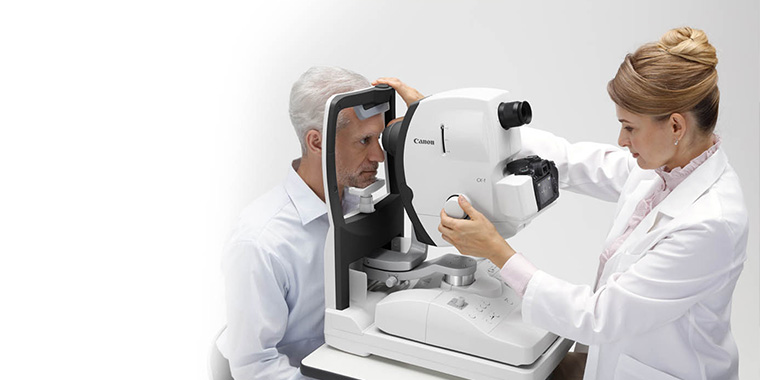Andalusia Optometrist: Professional Ophthalmologists in Your Area
Andalusia Optometrist: Professional Ophthalmologists in Your Area
Blog Article
The Advantages And Disadvantages of Various Refractive Surgical Procedures for Enhanced Eyecare

LASIK Surgical Procedure
LASIK surgery is a frequently done refractive treatment that intends to fix vision issues such as nearsightedness, farsightedness, and astigmatism. During the treatment, a slim flap is developed on the cornea, and a laser is utilized to reshape the underlying tissue, dealing with the refractive mistake.
Among the main benefits of LASIK surgery is the quick enhancement in vision experienced by numerous clients. Most people observe a substantial improvement in their vision soon after the treatment, with minimal downtime required for recuperation. Furthermore, LASIK is recognized for its high success rate and reduced incidence of difficulties when done by skilled surgeons. Like any medical procedure, LASIK additionally carries some risks, consisting of dry eyes, glow, halos, and under or overcorrection of vision. It is important for individuals thinking about LASIK surgical procedure to undergo an extensive examination by an eye treatment professional to figure out if they appropriate candidates for the treatment.
PRK Procedure
The PRK treatment, likewise known as Photorefractive Keratectomy, is a kind of refractive surgical procedure that aims to correct vision concerns comparable to LASIK surgical treatment. Unlike LASIK, which entails producing a flap in the cornea, PRK functions on the surface area layer of the cornea.
One of the benefits of PRK over LASIK is that it gets rid of the threat of flap-related problems since no flap is developed during the surgical procedure. This can be beneficial for people with slim corneas or those associated with call sports where eye injury is a possibility. The recovery time for PRK is commonly much longer compared to LASIK, as the external layer of the cornea requires time to restore after the procedure. In spite of the longer recovery period, PRK can be a suitable alternative for individuals looking for vision correction surgical procedure.
SMILE Surgical Procedure
A cutting-edge refractive surgical treatment method getting popularity in the field of ophthalmology is SMILE Surgical treatment. Small Cut Lenticule Extraction (SMILE) is a minimally intrusive procedure that deals with vision by improving the cornea using a femtosecond laser. Unlike conventional LASIK surgical treatment, SMILE Surgical treatment involves producing a little cut in the cornea to extract a lenticule, which causes less interruption to the corneal framework and possibly much faster recuperation times.
Among the main advantages of SMILE Surgical treatment is its capability to treat nearsightedness (nearsightedness) and astigmatism with high precision, resulting in outstanding aesthetic outcomes for clients. The click for more minimally invasive nature of the procedure additionally lowers the danger of complications such as completely dry eye syndrome, making it a beneficial option for individuals looking for refractive surgical procedure.

LASEK Method
Having actually explored the advantages and considerations of SMILE Surgical treatment, one more notable refractive surgery method worth examining is the LASEK Technique. LASEK, which means Laser-Assisted Subepithelial Keratectomy, is a Get More Information form of laser eye surgical procedure that intends to remedy refractive mistakes such as nearsightedness (nearsightedness), hyperopia (farsightedness), and astigmatism.
Unlike LASIK, LASEK does not involve producing a corneal flap. Instead, during a LASEK procedure, the surgeon utilizes a diluted alcohol remedy to loosen up the slim outer layer of the cornea, understood as the epithelium.
One of the key benefits of LASEK is that it can be suitable for people with slim corneas that might not be excellent prospects for LASIK. Additionally, LASEK normally causes marginal post-operative pain and a quicker healing time contrasted to PRK. The aesthetic recovery procedure with LASEK may be somewhat longer than with LASIK.
Implantable Contact Lenses
Implantable Call Lenses provide a long-term vision modification option for people seeking an alternative to typical get in touch with lenses or glasses. These lenses, additionally called phakic intraocular lenses, are operatively inserted into the eye to correct refractive errors such as nearsightedness (nearsightedness), hyperopia (farsightedness), and astigmatism. eye center andalusia. Unlike index conventional contact lenses that sit on the surface area of the eye, implantable contact lenses function within the eye itself, providing clear vision without the demand for daily upkeep or removal
Among the vital benefits of implantable contact lenses is their permanence. When inserted, they can stay in the eye forever, using consistent and secure vision improvement. Additionally, these lenses can be an exceptional option for individuals who are bad prospects for laser eye surgical treatment or that prefer a reversible vision correction treatment.
Nevertheless, implantable contact lenses do bring some threats, including the possibility for cataracts or raised eye pressure. It is crucial for people considering this option to seek advice from with an eye care professional to determine if implantable contact lenses are the right option for their certain needs and eye wellness.
Verdict
In verdict, each kind of refractive surgical procedure has its own advantages and drawbacks. LASIK surgical treatment is preferred for its quick recuperation time, while PRK treatment might be appropriate for clients with thin corneas.

Overall, SMILE Surgery provides an encouraging choice for people looking to improve their vision with refractive surgical procedure.
Report this page